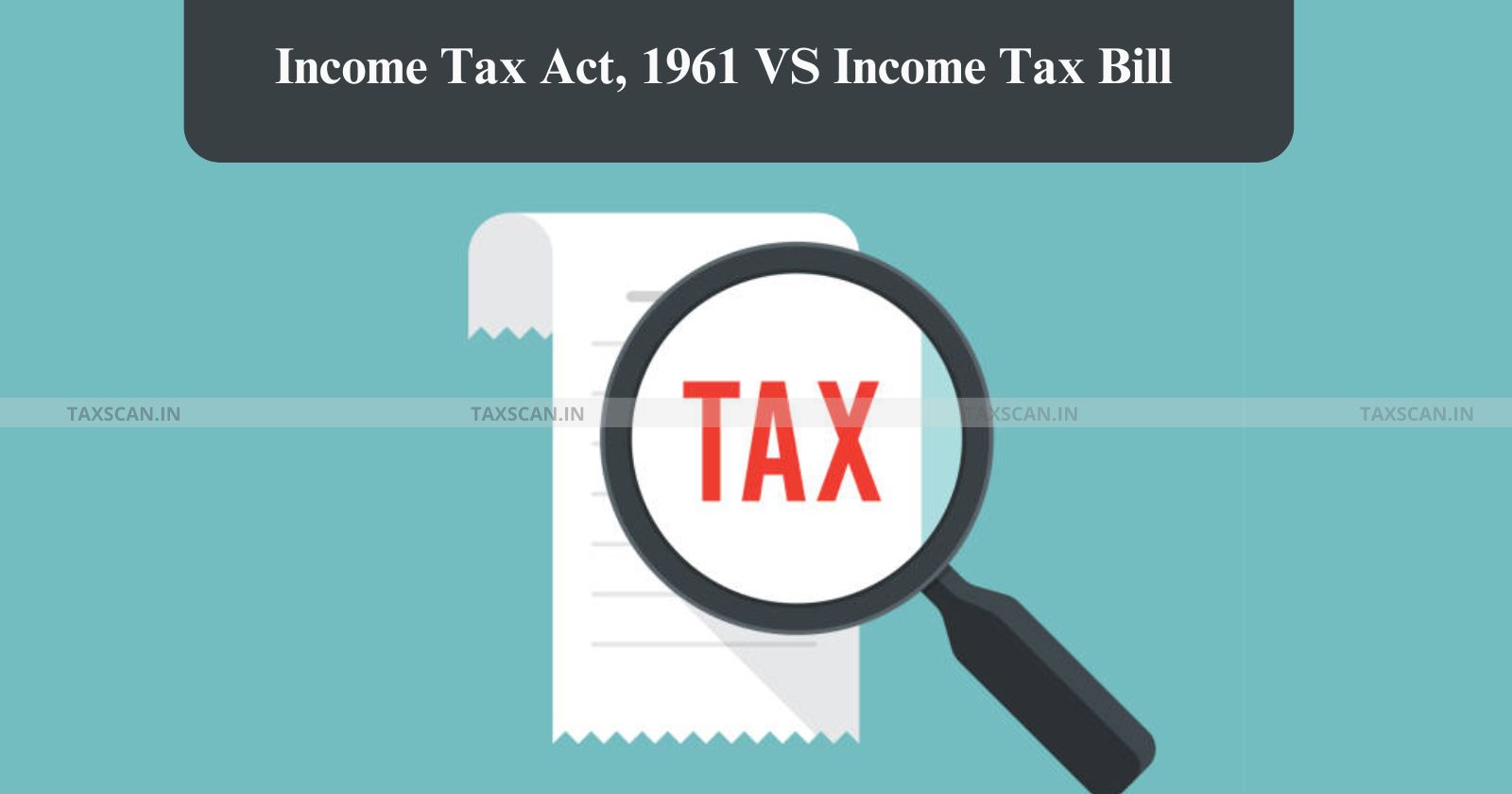Income Tax Act, 1961 v/s Income Tax Bill 2025: Key Provision Changes
The Income Tax Bill 2025 is poised to come into force to replace the six-decade old Income Tax Act, 1961, and rightly so reflects numerous changes akin to the present times

The much-anticipated Income Tax Bill, 2025, is set to replace the Income Tax Act, 1961, which has completed more than six decades being in-force. The New Income Tax Bill 2025 tabled by Union Finance Minister Nirmala Sitharaman in the Lok Sabha today brings with it a more streamlined and taxpayer-oriented format.
The Income Tax Act, 1961 served as the sole income tax charging statute since its inception in 1961, undergoing numerous changes and amendments over the years. The advent of the internet and increased reliance on technology and automated systems in recent years is a natural shift for archaic legislation to be amended to be in-line with present day economic and modern conditions.
Comprehensive Guide of Law and Procedure for Filing of Income Tax Appeals, Click Here
‘Tax Year’ Over ‘Assessment Year’
The Income Tax Act, 1961, under Section 4, charged income tax for a financial year at rates specified in the Finance Act for the corresponding assessment year. Whereas, the Income Tax Bill, 2025 in Clause 4 seeks to replace this system with the concept of a “tax year”, aligning the financial year and assessment year into a single period. This change is aimed at simplifying tax compliance and reducing ambiguities in filing returns, aligning with best global practices.
Expanded Definitions and Digital Inclusion
The Income Tax Act, 1961, under Section 2, provided definitions for key terms such as "assessee," "assessment year," and "previous year", but failed to account for modern financial instruments such as digital assets. Clause 2 of the new bill consolidates definitions and introduces terms like “virtual digital asset ( VDA ),” and “electronic mode” bringing much clarity in e-taxation.
Residency Criteria with Stricter Guidelines
Under Section 6 of the 1961 Act, an individual was considered a resident of India if they stayed in the country for 182 days in a financial year or 60 days in specific cases.
However, Clause 6 of the Bill retains these broad parameters but has brought forth refined provisions for individuals with multiple citizenships or complex residency situations. This change provides greater transparency and eliminates loopholes that were often exploited in international tax planning.
Revised Heads of Income and Deductions
Traditionally, income has been classified into five heads - Salaries, House Property, Business/Profession, Capital Gains, and Other Sources, all of which remains in the new bill. However, Clauses 13 to 59 expand these categories to explicitly include income from virtual assets, digital businesses, and online earnings.
The revisions modernize income classifications while ensuring that new-age revenue streams are properly accounted for under tax laws.
Capital Gains Overhaul
The 1961 Act offered various deductions and exemptions under Sections 10 and 80C to 80U, covering investments, donations, and other expenses.
The 2025 Bill, through Clauses 11 to 154, consolidates these deductions and introduces new provisions benefiting startups, digital businesses, and renewable energy investments. Additionally, the standard deduction for salaried individuals has been increased to ₹75,000, providing significant relief to middle-income taxpayers.
Comprehensive Guide of Law and Procedure for Filing of Income Tax Appeals, Click Here
The taxation of capital gains, previously covered under Sections 45 to 55A, remains largely intact in the new bill but is dealt with key refinements. Clauses 67 to 91 introduce specific provisions for virtual digital assets (VDAs) and update holding period thresholds for certain asset classes.
Modern investment instruments such as cryptocurrencies and digital securities are also slated to be accommodated within the new provisions by means of these inclusions.
Automation and Faceless Assessments
Previously, tax administration under Sections 139 to 158 relied heavily on manual processes for return filing, audits, and assessments. The new bill, in Clauses 263 to 389, mandates e-filing, faceless assessments, and automated taxpayer interactions, reducing human intervention and increasing transparency.
Stricter Compliance
The General Anti-Avoidance Rules ( GAAR ) that had a limited scope under Sections 95 to 102 of the Income Tax Act, 1961 have been significantly strengthened in the new bill. Clauses 178 to 184 provide for broader GAAR coverage, stricter scrutiny of impermissible tax arrangements, transactions lacking commercial substance and enhanced measures against tax evasion.
Non-Profit Organizations
While Sections 11 to 13 of the Income Tax Act, 1961 Act provided tax exemptions for non-profit entities, they lacked detailed compliance measures. Clauses 332 to 355 in the new bill introduce a comprehensive regulatory framework that imposes stricter compliance and reporting requirements to prevent misuse of tax benefits.
Dispute Resolution Mechanism
Under the 1961 Act, taxpayers had access to a Dispute Resolution Panel ( DRP ) under Section 144C, mainly for foreign companies. The 2025 Bill, through Clause 275, expands the DRP's scope and introduces a Dispute Resolution Committee ( DRC ) under Clause 379, catering specifically to small and medium taxpayers for quicker and more efficient dispute resolution.
Speedy Redressal
Clauses 268 to 296 of the new bill gives tax officers expanded powers to request asset and liability statements, introduces faceless scrutiny through Clause 273, and shortens reassessment timelines by means of Clauses 279 to 285.
Comprehensive Guide of Law and Procedure for Filing of Income Tax Appeals, Click Here
The appellate process has also been streamlined, with first appeals now allowed at the Joint Commissioner level (Clause 356), while the ITAT and High Court procedures (Clauses 362-365) have been simplified for efficiency. A new Board for Advance Rulings has also been introduced through Clause 381 to improve tax predictability for businesses.
Implications for Taxpayers
The immense changes introduced through the Income Tax Bill, 2025 aims to streamline taxation, eliminate ambiguities, and promote compliance through automation, digital inclusion, and modernized tax rules.
The introduction of faceless assessments, expanded digital income classifications, and stricter anti-evasion measures paves the way for India’s tax system to navigate through the next phase of economic growth.
As the bill awaits final approval and assent, much like any other statutory provision, the complete efficacy and sustainability of the law may only come to light following its implementation.
Support our journalism by subscribing to Taxscan premium. Follow us on Telegram for quick updates


